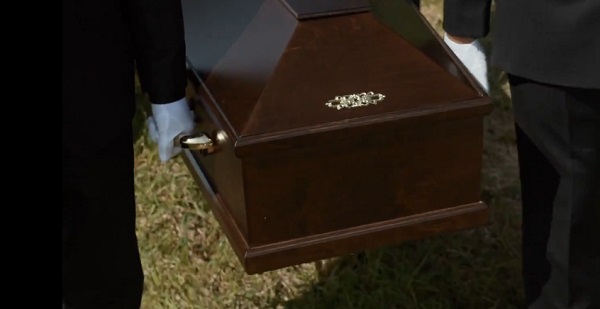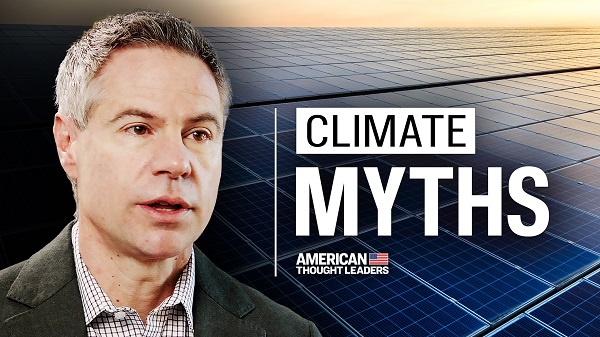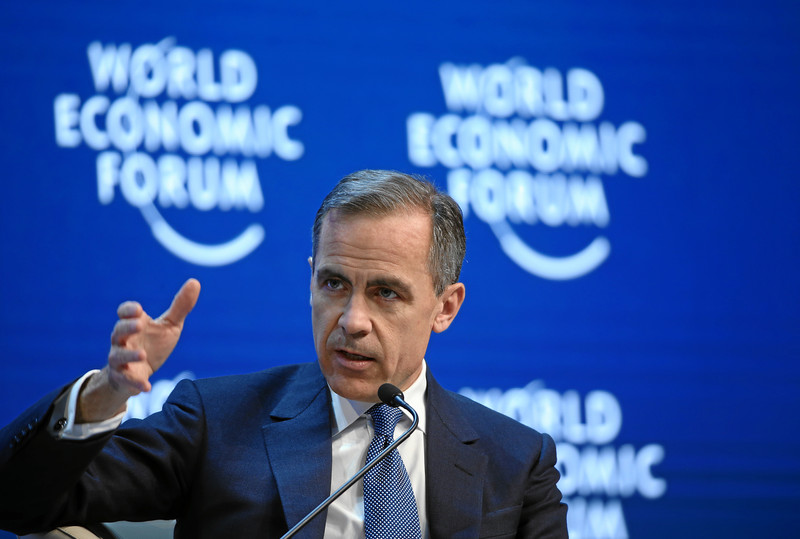armed forces
Underfunded and undermanned, Canada’s Reserves are facing a crisis

The Macdonald Laurier Institute
By J.L. Granatstein for Inside Policy
With the new threats facing Canada and NATO, change must come quickly: Canada needs to fix the Army Reserves.
Canada’s once-proud Reserves force is fading fast – and without urgent action, it risks becoming irrelevant.
The Canadian Armed Forces Primary Reserves have an authorized strength of 30,000, but the present numbers of the Army, Navy and Air Force Reserves as of November 2024 are only 22,024. The RCN Reserves number 3,045, the RCAF 2,162, and the Army 16,817. This is frankly pathetic, all the more so as the regular forces are sadly understrength as well.
The Army Reserves have a long history, with some units dating back before Confederation. Before both world wars the Militia’s strength was roughly 50,000, generated by populations of eight million in 1914 and eleven million in 1939. Amazingly, despite a lack of training and equipment, the Militia provided many of the Army’s officers, up to and including successful division and regimental commanders, and large numbers of the senior non-commissioned officers. A century ago, even after some consolidation following the Great War, almost every town and city had an armoury and a Militia unit with a cadre of officers, good numbers of enlisted men, and some social status in their community. The factory owners, bankers, and well-off were heavily represented, and the Militia had real clout with representation in Parliament and easy access to the defence minister.
Not any longer. The armouries in most of Canada have disappeared, sold off by governments and levelled by developers, and those that still stand are in serious need of maintenance. The local elites – except for honorary colonels who donate funds for extra kit, travel, celebratory volumes, and to try to stop Ottawa from killing their regiment – are noticeably absent.
So too are the working men and women and students. As a result, there are Army Reserve units commanded by a lieutenant-colonel with three majors, half a dozen captains, ten lieutenants, a regimental sergeant major and any number of warrant officers, and under seventy in the ranks. It is a rare Reserve regiment, even those in Canada’s largest cities, which has a strength above 200, and ordinarily when a unit trains on a weeknight or a weekend only half that number turn up. Even in summer, when reservists do their serious training at Petawawa or other large bases, there will be many absentees.
And when a unit is asked to raise soldiers for an overseas posting – say for the Canadian-led brigade in Latvia – it might be able to find ten or so volunteers, but it will be highly unlikely to be able to do so when the next call comes. Reservists have families, jobs or school classes, and few are able and willing to go overseas and even fewer to do so for subsequent deployments.
Without reservists filling the ranks (and even with them providing up to 20 per cent of a battalion’s strength), the undermanned regulars must cobble together a battalion of 600 or so by seconding troops from another Regular unit. After being brought up to Regular force standards before deployment, the reservists have performed well in operations, for example, in Afghanistan.
So why can’t the Army Reserves find the men and women to join their ranks? The reasons are many and much the same as the recruitment difficulties facing the Regular Army. Sexual harassment cases have abounded, affecting the highest ranks and the lowest. Modern equipment has been and is continuing to be lacking.
Procurement is still bogged down with process, paperwork, and long timelines – for instance, approving a new pistol took a decade. And the Reserves get modern equipment only after the Regulars’ needs are met, which unfortunately means never. Instead of a tank or a Light Armoured Vehicle, units get pickup vehicles painted in dark green and see anything more only on their rare days of training in the field.
Leaders of the Reserves have called for a separate budget for years, demanding that they decide how the funds are allocated. National Defence Headquarters has refused, rightly claiming that the underfunded Regulars have higher priority. But the Reserves point to official documents that in 2019-20 demonstrated that of $3.018 million allocated to the Reserves, only $1.3 billion reached them, the rest being unspent or re-allocated to the Regulars.
With some reason this infuriates Reservists who point to this happening every fiscal year.
So too does what they see as the condescension with which they are treated. A Reserve major is equal in rank to a Regular major, but both know that the Regular is almost always far better trained and experienced for his job and that rankles. (Many years ago, when I was a junior officer, I remember another Regular referring to “the ****ing Militia.” I know that Reserve officers reverse the compliment.)

Today with unemployment above nine per cent and with young Canadians’ unemployment rate even higher, the Reserves pay a new private a daily rate of some $125 (The Carney government recently promised a substantial pay raise). This ought to be a good option to earn some money. The Toronto Scottish, an old and established infantry unit, for example, has a website that lists other benefits: up to $8,000 for educational expenses and up to $16,000 for full-time summer employment. The Toronto Scottish has two armouries in the western suburbs, a female Commanding Officer, but under 200 soldiers. There should be a real opportunity in the current circumstances to increase those numbers by a good advertising campaign pitched directly at young men and women in the Toronto suburbs. The same can be said for every big city.
But the small town and rural units, tiny regiments whatever their storied histories, are unlikely to be able to grow very much. National Defence Headquarters needs to set a number – say 150, 200, or 250 – above which a unit will keep its command structure. Below that standard, however, units will be stripped of their higher ranks and effectively consolidated under the Reserve brigade in their area.
Reservists have fought such suggestions for years, but if the Reserves are to become an efficient and effective force, this is a change that must come. One such experiment has combined the Princess of Wales Own Regiment in Kingston, Ontario, and the Brockville Rifles by putting the Commanding Officer of the first and the Regimental Sergeant Major of the second in charge. Unit badges can remain, but this reduces the inflated command staffs.
In reality, these small regiments are nothing more than company-sized sub-units, and sub-units of less than a hundred simply cannot train effectively or draw enough new members from their small town and rural catchment areas. Combined they can function effectively.
The federal government will soon release an army modernization plan. Change is always difficult but with the new threats facing Canada and NATO, change must come quickly. Canada needs to fix the Army Reserves.
Historian J.L. Granatstein is a member of the Macdonald-Laurier Institute’s Research Advisory Board. A bestselling author, Granatstein was the director and CEO of the Canadian War Museum. In 1995, he served on the Special Commission on the Restructuring of the Reserves.
armed forces
Canadian veteran says she knows at least 20 service members who were offered euthanasia

From LifeSiteNews
Canadian Armed Forces veteran Kelsi Sheren told members of the House of Commons that he has proof of veterans being offered assisted suicide.
Canada’s liberal euthanasia laws have made the practice so commonplace that a Canadian Armed Forces (CAF) veteran has said she knows and has “proof” that no less than 20 of her colleagues were offered unsolicited state-sponsored euthanasia.
Kelsi Sheren, who is a CAF veteran, recently told MPs in the House of Commons veterans affairs committee that “over 20 veterans have confirmed being offered MAID.”
“I have the proof, and I have proof of more,” Sheren told the committee during an October 28 meeting.
Conservative MP Blake Richards asked Sheren if she was willing to provide them with evidence to affirm her allegations.
Sheren noted how the 20 veterans have given written testimonies, or actual audio recordings, of when they were offered what in Canada is known as Medical Assistance in Dying (MAiD).
“We also have other individuals who are too afraid to come forward because Veterans Affairs has threatened their benefits,” she told MPs, adding that some other veterans were even offered non-disclosure agreements along with “payouts if they were to take it.”
Veterans Affairs Canada (VAC) has told the media its “employees have no role or mandate to recommend or raise (MAid). ”
As reported by LifeSiteNews, this is not the first time reports of CAF veterans saying they were offered MAiD.
Indeed, as reported by LifeSiteNews, it was revealed last year that the federal department in charge of helping Canadian veterans appears to have purposefully prevented the existence of a paper after scandalous reports surfaced alleging that caseworkers had recommended euthanasia to suffering service members.
LifeSiteNews recently published a report noting how a Canadian combat veteran and artillery gunner revealed, while speaking on a podcast with Dr. Jordan Peterson, that the drugs used in MAiD essentially waterboard a person to death. Assisted suicide was legalized by the Liberal government of former Prime Minister Justin Trudeau in 2016.
A new EPC report has revealed that Canada has euthanized 90,000 people since 2016.
As reported by LifeSiteNews last week, a Conservative MP’s private member’s bill that, if passed, would ban euthanasia for people with mental illness received the full support of the Euthanasia Prevention Coalition (EPC).
armed forces
Why we keep getting Remembrance Day wrong

This article supplied by Troy Media.
 By Pat Murphy
By Pat Murphy
Remembrance Day once honoured soldiers for their courage and conviction, but the values they fought for have long since been rejected
With the untimely death of Tim Cook on Oct. 25, Canada lost a valued historian. Military history was Cook’s oeuvre, and the First World War was a particular specialty. His ability to marry academic rigour with accessible storytelling made him a relatively rare bird.
Naturally, Cook wrote about battles, military commanders and political leaders. But he was also fascinated with ordinary soldiers, scouring the archives for personal letters from the front and other material to develop an understanding of what
motivated the soldiers and how they managed the day-to-day horrors of prolonged trench warfare in an environment characterized by cold, mud, lice and rats, not to mention the ever-present spectre of violent death.
Camaraderie was critical. To quote from an interview with Cook: “one of the ways they cope is to create their own tribe, their own group that is insulated from everyone else.”
All of which brings us to Remembrance Day.
Although formally recognized as “remembrance for the men and women who have served, and continue to serve our country during times of war, conflict and peace,” both the origins and iconography of Remembrance Day relate to the First World War. There’s the two-minute silence at the 11th hour of the 11th day of the 11th month to observe the formal end of hostilities in 1918; the playing of the Last Post; and, of course, the ubiquitous red poppies.
The conflict wasn’t post Confederation Canada’s first military endeavour, but its scale dwarfed anything that came before it, and only the subsequent Second World War was a comparable event. Some 620,000 Canadians served between 1914 and 1918 and approximately 60,000 were killed. To get a sense of scale, adjust the fatalities for population growth and it would be comfortably north of 300,000 today.
In War: How Conflict Shaped Us, Margaret MacMillan notes the long history of cultures elevating personal characteristics associated with battlefield success, honouring bravery, endurance, toughness and the willingness to face death. It’s been pretty much a universal characteristic.
Nor should we think of war as only a male activity driven by patriarchal social structures. While it’s true that military hierarchies are traditionally male and the fighting in most wars has been done largely by men, women have always played
a key role in reinforcing the culture.
We, though, have become somewhat uncomfortable with the warrior ethos. Take, for instance, In Flanders Fields. Written in 1915 by Guelph’s John McCrae, the poem has acquired iconic status over the decades. It’s haunting and melancholy, sufficiently so to grab at your throat and send shivers down your spine. It’s also become inextricably intertwined with Remembrance Day.
There is, however, a small problem. While we now view the First World War as senseless carnage, In Flanders Fields has a very different perspective. As the third and final stanza makes unequivocally clear, the poem’s message isn’t about the war’s futility—it’s about the need to keep the faith and carry on to victory.
Much the same can be said about the music associated with the era. Those songs written in recent decades stress the sadness and futility of it all, but the actual popular music of the time was cheerful, patriotic and resolute.
Rather than seeing the soldiers as they were, we insist on recasting them as victims. Stripping them of personal agency, we ignore the fact that 80 per cent of them were volunteers, people who, for various reasons, chose to go to war.
So what motivated them?
Many were surely lured by the male affinity for adventure, compounded by patriotic fervour and enthusiastic loyalty to the concept of king and empire, however incomprehensible or disreputable the latter may now seem to us. There was also the buzz of an environment where the usual social norms regarding life, death and destruction had either vanished or become significantly attenuated. In her book, MacMillan documents how some found the whole experience “vastly exciting.”
Acknowledging this shouldn’t be confused with cheerleading. As I’ve previously written on more than one occasion, I think Britain’s reluctant decision to enter the First World War was a tragic error on many fronts. And if Britain had stood aside, Canada wouldn’t have been involved.
But respectfully remembering those who died shouldn’t be confused with turning them into something they were not. They weren’t hapless victims—they were people with beliefs and values of their own, even if we no longer look at the world in the same way they did.
Troy Media columnist Pat Murphy casts a history buff’s eye at the goings-on in our world. Never cynical – well, perhaps a little bit.
Troy Media empowers Canadian community news outlets by providing independent, insightful analysis and commentary. Our mission is to support local media in helping Canadians stay informed and engaged by delivering reliable content that strengthens community connections and deepens understanding across the country.
-

 espionage2 days ago
espionage2 days agoChinese-Owned Trailer Park Beside U.S. Stealth Bomber Base Linked to Alleged Vancouver Repression Case
-

 Daily Caller2 days ago
Daily Caller2 days agoLaura Ingraham Presses Trump On Allowing Flood Of Chinese Students Into US
-

 Daily Caller2 days ago
Daily Caller2 days agoUS Nuclear Bomber Fleet Shares Fence With Trailer Park Linked To Chinese Intel-Tied Fraudster
-

 Crime2 days ago
Crime2 days agoCBSA Bust Uncovers Mexican Cartel Network in Montreal High-Rise, Moving Hundreds Across Canada-U.S. Border
-

 Environment2 days ago
Environment2 days agoThe Myths We’re Told About Climate Change | Michael Shellenberger
-

 COVID-192 days ago
COVID-192 days agoSpy Agencies Cozied Up To Wuhan Virologist Before Lying About Pandemic
-

 MAiD21 hours ago
MAiD21 hours agoQuebec has the highest euthanasia rate in the world at 7.4% of total deaths
-

 Business2 days ago
Business2 days agoCarney and other world leaders should recognize world’s dependence on fossil fuels






